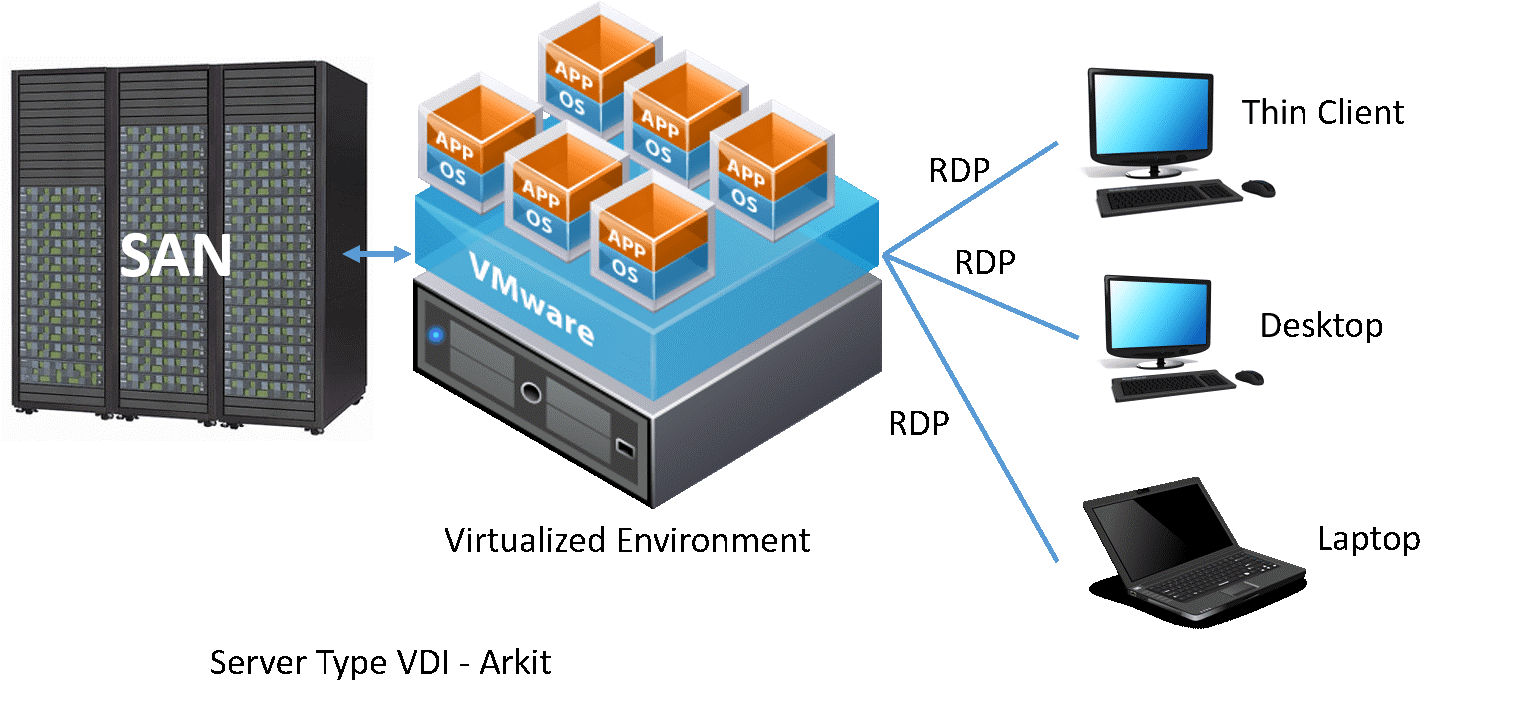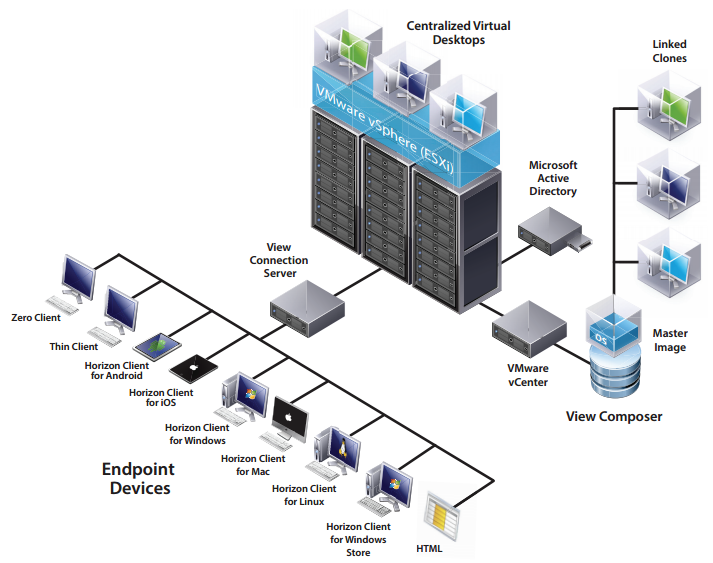Virtual desktop infrastructure (VDI) is virtualization technology that hosts a desktop operating system on a centralized server in a data center. VDI is a variation on the client-server computing model, sometimes referred to as server-based computing. The term was coined by VMware.
Virtual desktop infrastructure (VDI) is virtualization technology that hosts a desktop operating system on a centralized server in a data center. VDI is a variation on the client-server computing model, sometimes referred to as server-based computing. The term was coined by VMware.
In 2006, VDI began to emerge as an alternative to the server-based computing model used by Citrix and Microsoft Terminal Services. Today, VMware, Citrix and Microsoft all offer their own VDI platforms.
There are two main approaches to VDI: persistent and nonpersistent. Persistent VDI provides each user with his or her own desktop image, which can be customized and saved for future use, much like a traditional physical desktop. Nonpersistent VDI provides a pool of uniform desktops that users can access when needed. Nonpersistent desktops revert to their original state each time the user logs out.

Benefits of VDI
Virtual desktop infrastructure is a desktop virtualization approach in which a desktop operating system, typically Microsoft Windows, runs and is managed in a data center. The desktop image is delivered over a network to an endpoint device, which allows the user to interact with the OS and its applications as if they were running locally. The endpoint may be a traditional PC, thin client or even a mobile device.
This approach can have many benefits, depending on the type of VDI deployed. Because little actual computing takes place at the endpoint, IT departments may be able to extend the lifespan of otherwise obsolete PCs by repurposing them as VDI clients. And when the time does come to purchase new devices, organizations can buy cheaper, less powerful machines.
Because all data lives in the data center, not on the endpoint, there are significant security benefits of VDI. A thief who steals a laptop that uses VDI can't take any data off the machine, because there is no data on the machine.
Nonpersistent VDI also helps when it comes to management. IT has a minimal number of master images to maintain and secure, which is much simpler than managing a complete desktop for each user.
Other benefits of VDI include the ability to more easily support remote and mobile workers.
Drawbacks of VDI
The cost savings associated with endpoint hardware can disappear quickly, however, after factoring in IT infrastructure expenses.
Storage in particular can make VDI cost prohibitive. When a desktop runs locally, the operating system, applications, data and settings are all stored on the endpoint. There is no extra storage cost; it's included in the price of the PC. With persistent VDI, however, the OS, applications, data and settings for every single user must be stored in the data center. Capacity needs, and the cost required to meet them, can quickly balloon out of control.
Converged infrastructure and hyper-converged infrastructure products, which bundle storage, servers, networking and virtualization software -- often specifically for VDI deployments -- have emerged to help address the scalability and cost challenges associated with virtual desktop infrastructure.
VDI's reliance on network connectivity presents another challenge. Users can't access their virtual desktops without a network connection, and weak connectivity can hinder desktop performance. This problem is especially common with graphics-intensive applications and other software with high processing demands.
In addition, VDI can complicate software licensing and support. Nonpersistent VDI especially causes issues, because some licensing and support agreements do not allow for software to be shared among multiple devices and/or users.
